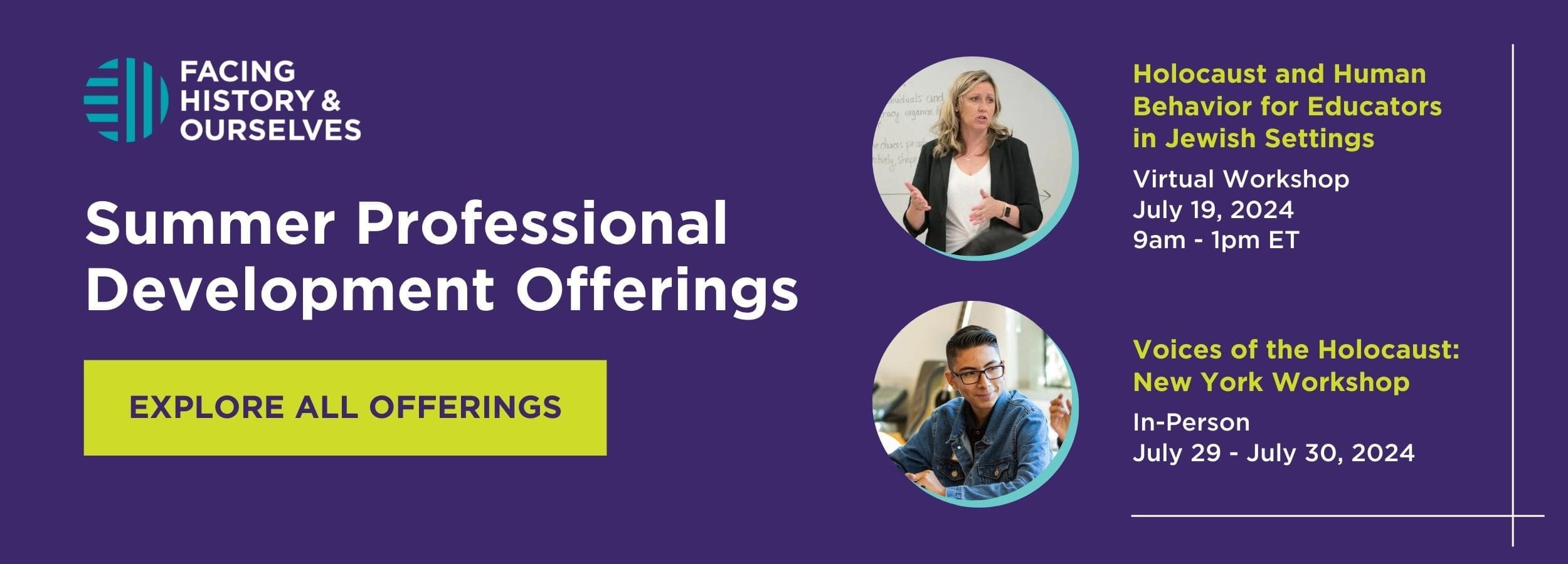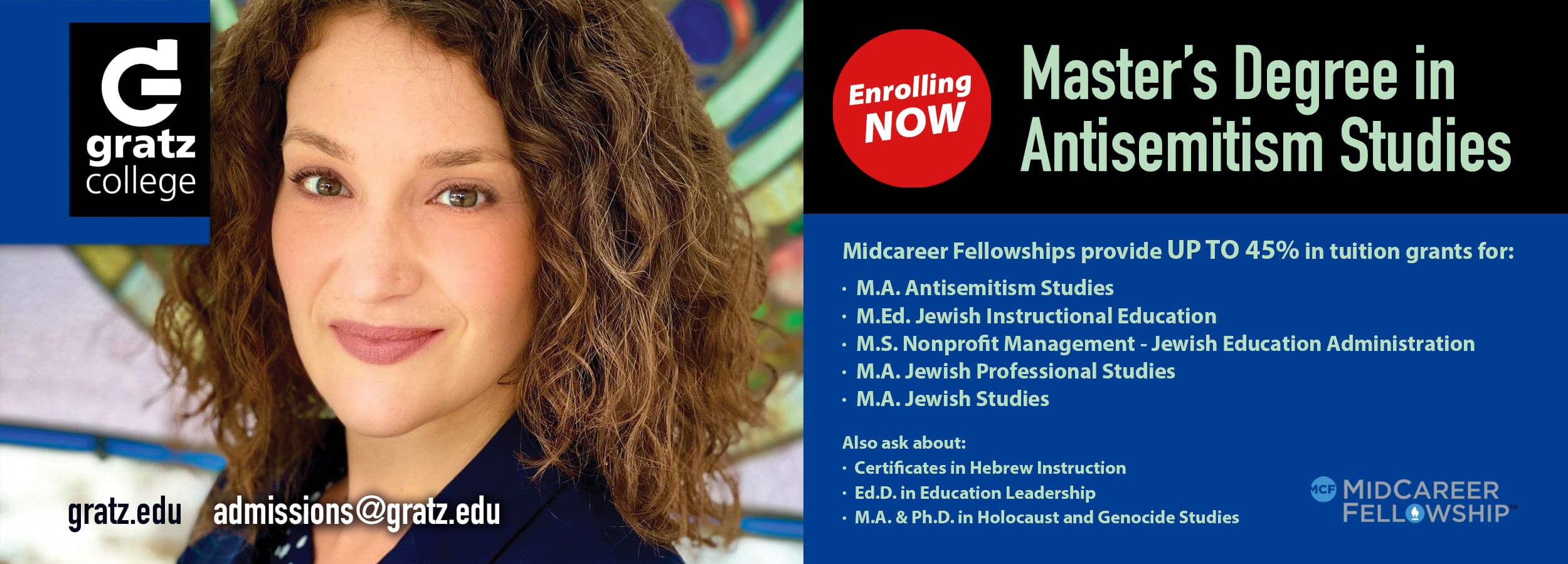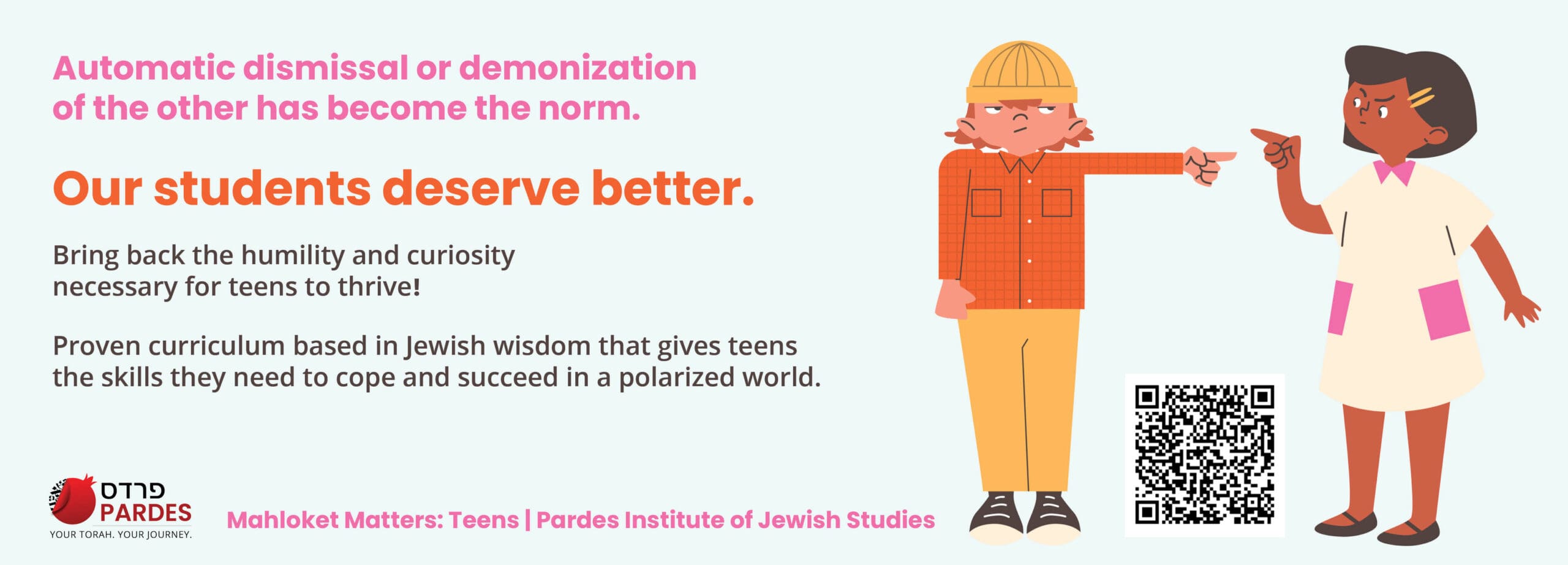Aspiring to Expand our Circle of Inclusion: an Interview With Jon Mitzmacher
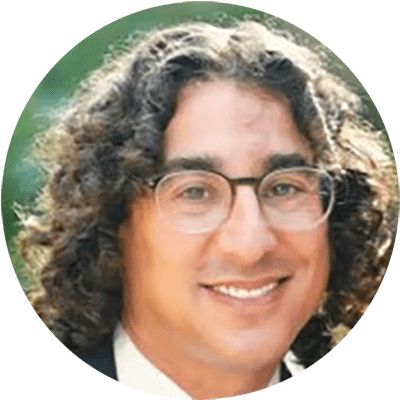
Jon Mitzmacher is in his seventh year as the Head of the Ottawa Jewish Community School. Dr. Mitzmacher is studying to be a rabbi at the Academy for Jewish Religion and is on the faculty of the Day School Leadership Training Institute (DSLTI) as a mentor. Jon served as the VP of Innovation for Prizmah: Center for Jewish Day Schools and as the Executive Director of the Schechter Day School Network, and was head of the Martin J. Gottlieb Day School (Jacksonville, FL) and was the founding head of the Solomon Schechter Day School of Las Vegas. Jon has worked in all aspects of Jewish Education from camping to congregations and everything in between.
Jewish Educational Leadership: In what ways do you see diversity as a challenge in your school and in what ways do you see it as an opportunity?
Jon Mitzmacher: Well, it’s both. Right? The opportunity is to ensure that our students come through their experience with an opportunity to learn about and learn with those who may be different than themselves, different across a variety of categories, whether it’s socio-economic, whether it’s learning differences, whether it’s with ideological differences, the value is in experiencing themselves as part of a diverse kehilla.
The challenges, I would say, are divided into two broad categories. Most of the kinds of diversities that are challenging for schools boil down to economics; how you choose to draw the circle of inclusion is in many ways a function of what you are financially capable of doing well. So, philosophically or aspirationally we can say that we would love to have every child regardless of any particular need. If we had infinite scholarships to offer, we could provide resources that kids who have very significant learning and behavioral needs might require to be successful. If we had those things, we would aim to create space for them around our circle. Where we struggle is really right in that sweet spot between what exactly we think we can do well and what we can reasonably afford to do.
The second category, which is as important and as challenging, is when we’re talking about the full breadth and diversity of the Jewish community. And that’s not a function of economics. That is a function of hashkafa, ideological considerations, and a little bit of a function of structure. For example, while we, as a small school, will try in our middle school to create as many spaces for as many different sub-communities as we might have, we are limited based on our size as to what we can offer in comparison to some of the larger schools which will have a rich and varied menu of tefilla options for every subcategory of the Jewish community. So while we might aspire to that philosophically, realistically we can only break down into as many groups as we’re big enough to be able to responsibly staff. But I think that there are more challenges in trying to create a community at a school that holds the full breadth and diversity of the Jewish community than any of the other subcategories of inclusion that you might think of.
Aside from the financial aspect, can you think of instances where pursuing your dream of diversity for the school has been difficult?
I think the most difficult challenges have been when I’ve been in communities in which the public school system, which ought to be in a position to provide a higher quality of service for kids who have behavioral or learning needs, oftentimes isn’t. That means that you have Jewish families who then pivot towards the Jewish school thinking to themselves, “It’s a smaller school, so my child is likely to get more individualized attention. They’re going to be more likely to be compassionate and lead with their hearts and with their souls. So, I’m going to try to put my child in that school even if the school actually isn’t all that well equipped to navigate the situation.”
Those are the most difficult admissions because while we might be the best of their options, we might not be equipped to provide the child with what the child needs to be successful. Those are hard conversations. And of course, in the back of your head, you’re also always trying to weigh the complicated calculus between what’s good for an individual child, what’s good for a class of 14-15 students, who your staff is, what they’re capable of doing, etc. That, in itself, can create a very uncomfortable socio-economic disparity because those families who have the financial wherewithal to provide that extra set of things that that child would need to be successful can and often do. Those who can’t, can’t—and don’t. So, you wind up having an uncomfortable situation where a child who requires a shadow and their family is wealthy enough to be able to afford to pay for it, their child gets to go to the Jewish day school, and the one who can’t is left out. What I have tried to do in the communities I’ve lived in is to try to work with the larger Jewish community, because this is not the responsibility of any individual Jewish day school to solve. It’s a community conversation. And there are synagogues that should be in it, agencies that should be in it, and in a perfect world, there’d be a fund that families could avail themselves of so that is not just a function of who has enough money to pay.
If I could shift the focus from you as the Head of School to the students and the parents. What’s their experience with this approach to embracing diversity? Do they approach it the same way? How do you communicate these messages to the public?
In any school I’ve worked in there was always a significant degree of transparency. The conversations around mission, vision, and program are always public-facing. That’s the only way I know how to lead. Beyond this, in all of the schools in which I’ve led, there’s been sort of an overarching philosophy of learning that really does try to embrace and embody personalized learning. What that means is that every child in the school deserves to have been thought through as if they had an IEP, an Individualized Education Plan. The result of such an approach is that the conversation you’re having is only to what degree of this range of IEP can our school provide. This brings us back to the practical questions of educational and financial resources. Given that our entire learning approach is one of personalized learning, there are pedagogical implications. We probably invest more heavily in special education than most schools of our size. We have a Director of Special Needs Education, we have multiple full-time resource teachers, not just covering English and secular academics but in Jewish studies and French because we’re trilingual. The principal comes from a special education background and many of our teachers get special education qualifications as part of their ongoing professional development.
So, having all of that in place and being very public-facing about it is how we ensure that our full community is mission and vision-aligned. That doesn’t mean that we are absolved of having really difficult conversations. We have them, but those end up being the boundary conversations. We always aspire to make the circle of inclusion a degree larger and struggle to figure out how to do that in a way that allows us to be successful. There are always going to be families who are on the outside of that circle and wish to be in, and that’s where the tension usually winds up being. I don’t know that there’s a solution to that other than a huge investment of money from the outside.
What you’re describing sounds like community alignment with regard to learning needs…
Learning, behavioral, in theory, or anything that gets in the way of the learning. So, I mean, we happen to have an elevator in our building—if we didn’t, we’d have another challenge. We’ve had children who are hearing impaired, and we’re fortunate to have the financial wherewithal to get the speaker system that the child needed to be successful. If we had someone who was visually impaired as well, I doubt that we currently have all the materials that such a child would need. We’ve had children with physical disabilities where we’ve struggled to figure out how to enable them to get out to recess or meaningfully do Phys Ed or even meaningfully navigate the school. So, aspirationally, we will do anything, but if it requires the allocation of staff or the allocation of resources that we don’t have in the budget, then that becomes a boundary challenge.
You mentioned boundaries a couple of times. Are there boundaries that you don’t want to break? Are there kinds of situations when you say, “This is not somebody we want to have because of X, Y, or Z?”
One clear boundary is where the child’s needs are so significant that it’s just not realistic, even if we might aspire to accommodate everyone. We’ve had applicants for whom the entire curriculum would need to be modified or rewritten in a way that just doesn’t feel realistic and others with behavioral issues involving degrees of physicality that we’re just not equipped to handle, even with a shadow. Those types of situations present challenges that don’t feel fair or realistic for the rest of the class or the teacher, especially in cases when we might potentially be putting them at risk. But I am always thinking about how to do this; I would love to be able to partner with specialized schools in our community that do have those services, to think together about how a child could sort of be dually enrolled in a place that really has all of that stuff who could potentially be brought into the Jewish school for Jewish experiences or for a sense of Jewish community. I have done that once or twice before with kids whose needs are very, very significant—they just come in for tefilla or for Kabbalat Shabbat, or when there’s a Jewish holiday. You know, it’s not a large Jewish community, so to have Jewish peers is meaningful for the family. So, even to just bring them in for those kinds of moments, to celebrate a birthday or whatever, while not taking on the academic responsibility because it’s just not realistic for us to navigate those other areas.
And then we get to the ideological spectrum. We are very clear about our notion of what it means to be a community school, and if the parents don’t want their child in that kind of environment, then we are not the right place for them. If you don’t want your child to see that there are other ways of being Jewish, then we’re not the right place. We do not want to be in a position where we’re going to make a child or a family do something they’re not comfortable with. So, for example, if they are not comfortable with their kids being exposed to the Internet or social media or the wider world, then we’re not the right address. This doesn’t come up all that often.
So those are the two boundaries we have.
I imagine, given that you are in Ottawa, that you don’t have an overwhelming flood of applicants for Jewish studies positions. Now, I also imagine that you would like your Jewish studies teachers to buy into the philosophy of the school, and with a limited pool to begin with, that could become even more challenging. How do you deal with that?
The ideology question is probably true in every Jewish school outside of the Orthodox world; the odds are you have a diverse Jewish studies faculty. Take the Schechter schools. I grew up in the Conservative movement and ran two Schechter schools and I don’t think that every Jewish Studies teacher was fully conversant with Conservative ideology and practice. In a community school, there isn’t one particular viewpoint that anyone needs to have because the school itself in some ways doesn’t have a particular religious ideological viewpoint, other than perhaps an academic or an affective orientation of what we want kids to come out with. This can make things both easy and difficult to navigate.
So, in a community school, the conversation is more about helping our faculty understand how to frame certain kinds of conversations so that they don’t accidentally trip over any theological or ideological tripwires. I also think that being a K-8 school is perhaps a little bit easier than being in a high school because most of our kids do not have a hiyuv (halakhic obligation) for anything and so we get away with a lot of things lesheim hinukh (because it’s primarily educational). With that, we work with the willing participation of all of the clergy in our community, having built a rabbinic advisory committee in our community that has every pulpit rabbi—Reform, Reconstructionist, Conservative, and many flavors of Orthodoxy—they all come to the table. They don’t often all agree on everything, and that’s OK because that’s not the point. But where we land on these issues comes with their participation in the conversation, which is part of what allows us to do what we do. I would say that 80% of what we teach is completely pareve, so the conversations with our faculty are about learning how to frame conversations. For example, that means avoiding definitive statements like, “Judaism says X” and “Jewish people do Y” as blanket or universal statements, because we don’t want to put our students in a position where they are made to feel judged by what their parents do or don’t do. At the same time, our aim is to ensure a baseline of Jewish literacy and Jewish text literacy, regardless of their home practice. That kind of academic Judaism is what we teach. What we do as a school, the ritual, behavioral, performative Judaism, that’s where we’re going to have those conversations.
So what we present is sort of a generic baseline, and sometimes, in the older grades, we’ll talk about denominational differences if they’re helpful and meaningful. When they get to middle school where they start to understand there are different siddurim, different choices that have been made in terms of the liturgy such as in Birkhot Hashahar or the inclusion-exclusion of the imahot from the opening of the Amida, that’s when we’ll have those non-judgmental conversations about different ways to be and express being Jewish. We’ll invite communal rabbis from across the spectrum when appropriate. The teachers need to be comfortable with all that and, regardless of their personal orientations, they need to be comfortable in an environment where the other positions are present. They have to be willing and capable of navigating those conversations and the questions that students ask, or put those conversations in the parking lot and let someone who’s more qualified come in and have those conversations with the kids. The other thing that I think makes it easier in our school, in particular, is that as an Ivrit beIvrit school, it’s hard enough just getting through the curriculum. We can’t really have those kinds of theological conversations in Hebrew so that deeper stuff is finessed through the blogosphere and other platforms. But the truth is, on most days, these are not live issues.
So what is the ideological/denominational demographic in your school?
That’s really hard to define. I’m starting my seventh year but I still don’t have an insider view like a Canadian; my lens is American and it’s different here. The Canadian Jewish community is still functioning a generation behind the Jewish community in the States, so if synagogue affiliation is your gauge, you would be misled because people’s affiliation patterns are less a function of personal ideology and more about geography, nostalgia, what their parents did, etc. On paper, it would look like the school is 60% Orthodox, but the majority of those families are not Orthodox behaviorally in any way that I would describe as being Orthodox. It’s sort of like, “I don’t do it, but if I did, I’d be Orthodox.” Recently, there does seem to be some shifting. So it’s hard for me to answer that question. I think that most of the growth in the school since I have been here has come from the Orthodox community, so I would guess that it is about 35-40% Orthodox, which is fairly high for a community day school. We have kids in the school who wear tzitzit and kids who have pe’ot, and that’s not so common in most community schools.
You mentioned that as a small school, you don’t have the option of the multiple offerings that some of the larger community schools have. So what, for example, does tefilla look like?
We spent about a year working with the Rabbinic Advisory Committee to come up with a plan. In the younger grades, we function with what we would describe as benign egalitarianism. We don’t use those words, but here’s what it looks like. We use a Conservadox student siddur; and that is a deliberate choice, not to use a siddur affiliated with any denomination. For example, the Birkhot Hashahar are from the Conservative siddur but the Amida does not include the imahot. There might be some other very minor differences, but not those that the students would notice. In the classrooms, boys and girls are learning the same thing, they both lead the tefilla, they will both hold the kiddush cup and light the candles and sometimes we’ll have an Imma and an Abba shel Shabbat and sometimes we’ll have two Immas or two Abbas, because we want to avoid the heteronormative categories which may signal messages on non-inclusivity. This is in the Lower School, and this is what I describe as benign egalitarianism. It functions fully egalitarian but we don’t speak about it explicitly with the students.
In the Middle School, grades six-seven-eight, things are different. We have two minyanim in the morning, and the students can choose. Here, even the language we use to describe the minyanim has gone through revisions over time based on feedback we’ve gotten from some of the families. So we call one of them a traditional minyan and the other a traditional egalitarian minyan. In reality, that translates into a Conservative one and an Orthodox one, but we don’t want to describe them using that language. If we were a larger school, we’d be offering more options. Now, kids have to go to a minyan; we’re clear with the parents that there is no opting out. Which one the child chooses—that’s a conversation that the parents need to have with their children. And they don’t need to stick with one; there are kids who bounce back and forth. We think that there’s an academic and experiential value for them to experience both, but again, that’s not for us to impose on the family. So that’s what we do in middle school, and anything to do with Jewish rituals would follow similar lines. For example, when we do Birkat Hamazon, we would not ask an Orthodox girl to lead the zimmun if that is not part of what her family does. We try to lean into who the kids are, what they believe, and how they practice once they’re old enough for it to count.
You spoke at length about the school’s role in imparting knowledge, that baseline of Jewish literacy. Many understand Jewish education as encouraging passion for Jewish identity and life; they are looking for some kind of meaningful commitment. What is it that you want your students to be passionate about, and how do you do that in an environment in which whatever students do is OK?
A lot of what happened during my first 18 months in the school was an attempt to clarify our school’s value proposition. We ended up with what we call our six North Stars, the anchors that guide how we function and how we make decisions in our school. We made sure that two of those had Jewish content or Jewish value. One is “Ruach” and the other is “inspiring Jewish journeys.” The way we envision that second one is that we view every family in the school as being on a Jewish journey and that we will not have considered ourselves successful if we have not inspired movement on that journey. We don’t dictate where that journey begins or ends, or even in what dimension it should move. There are definitely families for whom that Jewish journey does move in a traditional mode, whether that’s higher synagogue participation, taking on more traditional mitzvah observance, or Jewish study. For others, it may be about deepening their connection, their connectivity, and their relationship with Israel. For others, it might be expressed through philanthropy or through tikkun olam. Our goal is to help each child and family fall in love with being Jewish, and that love is going to look different for different families, but if there’s no movement, then we have not succeeded in that mission. Of course, it is challenging to gather data about that. How do we know if families are moving in their journeys? Nonetheless, that is our goal—to inspire movement on each family’s Jewish journey in a way that is comfortable for them, that’s aligned with who their family is and how they’re interested in moving.
Many Jewish day schools are dealing with issues of gender fluidity, identity, sexual orientation, diverse family structures, etc. How does that play out in your school, and where has that been challenging for you?
This is going to be one of those places where I imagine we’re going to reach an inflection point where a boundary will wind up being drawn. Part of our success has been in the spirit of trying to hold the center, but to do that we have not been as explicit or as public-facing as we otherwise would be because we have been concerned about what that would mean to our community. It’s strategically smart and politically savvy, but it feels a little cowardly and goes against my desire for transparency and being public-facing. There’s almost nothing in our school that I haven’t spent a lot of time thinking and writing and having meetings about, but here’s a place where we have been intentionally cautious. Like the benign egalitarianism, we’ve been doing it but not talking about it explicitly in our outward-facing conversation. Since I came to the school, we’ve had three kids transition, all of which were navigated individually with the family and sometimes required a conversation with students in that class. So, if a child wanted to change their pronouns, they changed their pronouns. We’ve had gender nonconforming boys who have worn skirts or dresses to school even going as young as like grade one or two. During COVID, our washroom situation sort of had already moved to a gender-neutral, highly individualized format. But, as I said, we have struggled to be public facing about our LGBTQ+ inclusion.
Here’s an example. We teach all the way through the last day of June, which means that we are in school during Pride Month in Canada. Just to be clear—Pride Month is a really big thing in multicultural Canada; even the Conservative Party is pro-LGBTQ+ inclusion. But in the six years that I’ve been here, we’ve never once formally acknowledged it, not in school, not out of school, not with the faculty or the students, and not with pride flags. We don’t say “Happy Pride.” We don’t have a Gay-Straight Alliance club. We don’t have rainbows that say, “You’re safe”—we’ve done none of those things.
This is the first year I had teachers ask why we don’t do this. It’s also the first year I’ve had rabbis on either side of the spectrum come to complain about the way in which we’re functioning. We had a rabbi complain that we are not loud and proud enough and another rabbi telling me that we shouldn’t have books in our library that describe non-traditional family groupings. I’m managing to upset both wings of our community—I must be doing something right!—but it’s uncomfortable. In our June board meeting, we began revisiting some of the major conversations we had six years ago, including inclusion, pluralism, and more. We are pretty comfortable with all of it except in this one area because we will need to be explicit like we are explicit about everything else that happens in our school—either we will recognize Pride Month or we won’t. Eventually, there will be a decision, and that will create a boundary. I am legitimately concerned about this because the miracle of what our school has accomplished over the last six years is explicitly in this very significant religious diversity that our school has to offer, which I know is not usual.
In my discussions with the rabbinic advisory board, I’ve started to introduce a new language to replace pluralism, because pluralism means that everyone around the table has to believe that everyone else’s position around the table is equally valid. And that’s just not realistic, certainly not on this issue. And community is more important to me than pluralism. So, what does tradition offer us to allow us to be in relationships with others while believing that other people are wrong—really wrong. That’s the kind of relationship I’m trying to create, it’s called tolerable deviancy. I don’t think that we will ever say to an LGBTQ+ family that their child is not welcome in our school, but I want the Orthodox rabbis in the community to be able to say, “We don’t agree with this position, but we’re willing to stay at the table. We’re willing to accept that congregants in our synagogues continue to put their kids in your school.” This will be similar to the model we adopted for egalitarianism. By the way, when it comes to certain issues, it is those on the left who need to be prepared to be tolerant, like with the issue of Israel. My higher value in all of this is community.
What I’m paying attention to is, because we’ve recruited successfully from Orthodox families, that there is a bubble that is rising through the grades. Where the discussions will happen is going to be over the small stuff. What kinds of books will we have in the library? Will the librarian do a read-aloud about non-traditional families during Pride Month? Do we allow parents to opt out of the public-school sex ed curriculum which includes issues of gender fluidity or that gender exists on a spectrum? That’s going to be where the conversation shifts. I think that we’re going to reach an inflection point where we have to at least acknowledge that choosing not to choose is a choice. And we have to be willing to at least say, we’ve chosen not to talk about this and here’s why we’ve chosen not to talk about this, or that we’ve chosen to talk about this knowing full well that by talking about it, it’s going to have ramifications. I don’t know that we’re going to be able to sort of hide in the center forever.
Regarding the students who transitioned in your six years in the school, you said there were some conversations with the students. Were there conversations with the parents as well?
In the first case, it was a child in grade 8, and that child did not “come out” until grade 8. I had a child in that class as did the Principal and the Admissions Director. We were in the parent conversations already, and every parent in the cohort understood what was happening and was supportive. As a result, we got away without having formal conversations with the parents. This year we had a child in grade five, who so far has only asked for a change in pronoun. We brought Keshet in to do some PD with both of the teachers in that grade level and then we did a second PD with our entire faculty—mostly around just terms and definitions. My understanding is that the Chief Rabbi in England has written some of the more interestingly progressive language around LGBTQ issues for an Orthodox institution, so we tried to draw from that. This is especially important since what I’m building up to is looking for some way when we eventually do wind up having to have an outward-facing conversation, I want to try to anchor this wherever I can, either to things that are happening in Orthodox communities or have been sanctioned by Orthodox communities or have texts that might be in support of some of what we’re trying to do. In this year’s case, we sent a simple email to parents in that grade letting them know that the child will now be referred to by such and such pronouns, that we’ve provided training from an outside organization that does this work, and that if they have any questions or concerns that they should turn to us. It was also helpful that the parents had done some legwork with those families.
You mentioned Israel as one of the areas that could be a hot-button issue, and local politics can get really, really divisive nowadays. The nature of political discourse has been incredibly abrasive and charged, and COVID brought out some of the worst in this. Has this filtered down into your school and what have you done to address it?
Right now, Canada is much more civil than the US, but who knows what will be in another generation. The culture here, and especially in Ottawa—which is the capital and has lots of people working for the government—is that there is an implicit trust in government. When it came to COVID, there were certainly some families who didn’t love all of the policies, but even the most aggressive of them would close their letters of complaint with proclamations of how much they liked the school. So we don’t have that kind of divisiveness on the level of local politics.
[Editor’s Note: this interview took place in July 2023, before Hamas’ October 7th attack on Israel.] And when it comes to Israel, there is an almost reflexive pro-Israel stance amongst the Jewish community. Unlike in the States, where there are multiple groups on the national level carrying out debates on Israeli policy, in Canada, there is a single organization. In the public sphere, we have experienced a rise in antisemitism, which often gets expressed in anti-Israel terms. So we do have to prepare our students to understand that they can be critical of Israel while coming from a place of caring. The only real internal debate on Israel often comes from within the Jewish studies faculty who come from Israel. We had a little taste of it in the last Israeli election, but it doesn’t go beyond their own internal debate. This is not really a conversation taking place amongst the parents or on the communal level. When it came to COVID, the Ministry of Health set the guidelines and that was also very helpful in calming any of the dissent.



Reach 10,000 Jewish educational professionals. Advertise in the upcoming issue of Jewish Educational Leadership.
Do you want to write for Jewish Educational Leadership? See the Call for Papers for the upcoming issue.
Spring 2024 Journal Credits
JEWISHEDUCATIONALEADERSHIP Jewish Educational Leadership is a publication of The Lookstein Center for Jewish Education of Bar Ilan University. Journal Staff Hyim Brandes | EditorChana German | Executive DirectorZvi Grumet | Editor-in-ChiefLeah Herzog | Editorial...
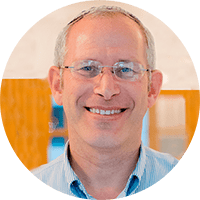

FROM THE EDITOR: SPRING 2024
In the 1970s, UJA’s rallying slogan was: “We are One.” Indeed, those were the days in which the Jewish community banded together over three core principles—commemoration of the Shoah, saving Soviet Jewry (and Syrian Jewry and Ethiopian Jewry), and Israel. The past fifty years have eroded each of those. People are tiring of the Shoah and are eager to move on from what Salo Baron termed the “lachrymose conception of Jewish history.” Soviet Jews left en masse in the 1990s with the fall of the Berlin Wall and the collapse of the Soviet Union, and Jews of Syria and Ethiopia have mostly migrated and resettled as well. And Israel, which is itself grappling with unparalleled polarization, no longer serves as a uniting factor for many North American Jews. All this leaves us, fifty years after the UJA banner, with a dramatic shift in punctuation:
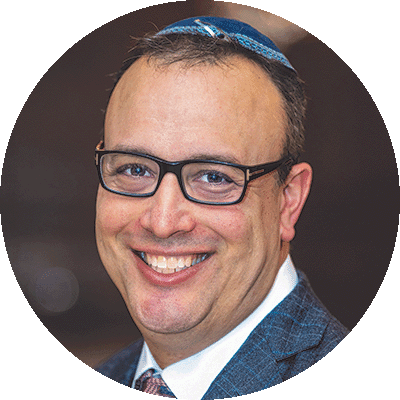

Accepting and Representing the Greater Jewish Community: an Interview with Jonathan Levy
We represent the Greater Toronto Jewish community, which means what we see in the Greater Toronto Jewish community is what we want to see here at our school. That can mean the whole range of diversity. It can be religious backgrounds, it can be a physical disability, it can be academic challenges. Of course, we do have limits in terms of what we can do and what we can’t do. We can’t be everything to everybody, but our goal is to be a diverse community that represents the Greater Toronto community. If you see it out there in the Toronto Jewish world, hopefully, you will see an element of that in our school as well,


Realities and Opportunities of Diversity in an Orthodox School: an Interview with Leonard Matanky
I see diversity as a reality. Because our schools have always been diverse, the question is, how diverse should our schools be? On the one hand, we can talk about tribes, every tribe had its own personality, and those personalities didn’t always mesh so beautifully, like the way that Yissakhar and Zevulun are often presented. So, I see diversity as something that has always been present. I think the one challenge we have, when it comes to the question of diversity is the very same kinds of things that Jonathan Haidt talks about when he talks about the moral foundations theory and how we view that diversity within a religious institution. And so, our school has always been a diverse
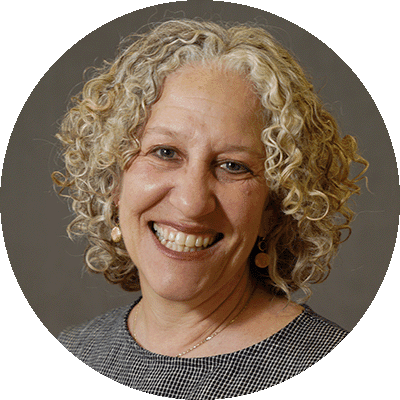

Embracing Diversity, Building a Stronger Jewish Future: an Interview with Nicole Nash
I’m going to start with opportunity because, to me, the opportunity outweighs any challenges. I’ve been in the field for a long time, and when you work in Jewish education, you meet so many children, parents, faculty, staff, and community members. I’ve had the privilege to see just how diverse the Jewish people are. When we are at our best, our diversity can be a real source of strength and celebration of Jewish peoplehood. When I say diversity, I think about it across ethnicity, race and nationality, Jewish identity and practice, interfaith family composition, sexual orientation, gender identity, life experience, socioeconomic status, worldviews—the list goes on and on.
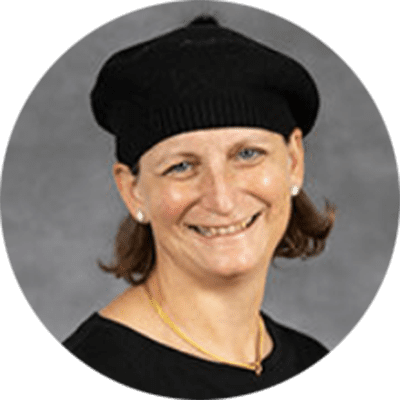

Cultivating Individuality and Cultivating Belonging: an Interview with CB Neugroschl
Diversity is both a deeply meaningful value and also a pop language word that means many different things to different people. When I was a Jewish philosophy teacher, diversity in our curriculum was about the relationship between Jews and non-Jews and about how we understand Hashem’s mission for both. When I speak about diversity today here in Teaneck, I recognize that we are talking about a very tiny slice of the diversity pie. The reality is that we are an all-girls Orthodox high school serving a fairly homogenous community. Of course, there are going to be nuanced differences, but the bottom line is that all those differences are within a fairly narrow band on the spectrum. So, here’s some background on where diversity is important in our context.
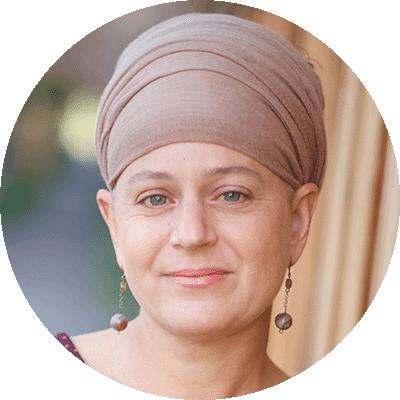

Ahavat Yisrael in a Small Jewish Community: an Interview with Tania Schweig
We’re a small community and our school has about 165 students. We’re quite stable in our enrollment and there are those who come and go because of the university. I feel like there’s a tremendous importance in small communities like ours and also a tremendous gift in these small communities. And I think our community has this special quality of ahavat Yisrael (love for our fellow Jewish people). I think that it’s important to say this because it is connected to the work of diversity. I really appreciate—like genuinely love—diversity. I like being in a place where it’s safe to be all kinds of things; it mirrors my own path. When I was in Pardes in Israel, I got to choose my path, I didn’t want to be in a box measuring up to someone else’s standards. For example, I wanted to be the person who’s becoming observant yet who is also asking questions about feminism.
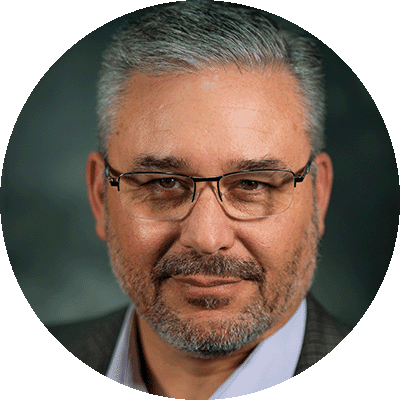

Diversity, Kindness, and Developing A+ Human Beings: an Interview with Mark Shpall
I try not to see it as a challenge. I really do see it as an opportunity because our students will continue to grow and go off to college, where they are going to be exposed to the real world, working with and interacting with people of all different backgrounds, ethnicities, learning abilities, appearances, etc. So we have the opportunity here to start or continue to process being open to that. We really try to do that from day one. In fact, we start school a week from today, but we are doing our retreats for our ninth and tenth graders starting now. Those retreats are all about the process of students opening themselves up to others in different ways and in different formats. We talk to our students about our core values, we want to talk about them so often that they start rolling their eyes at us because
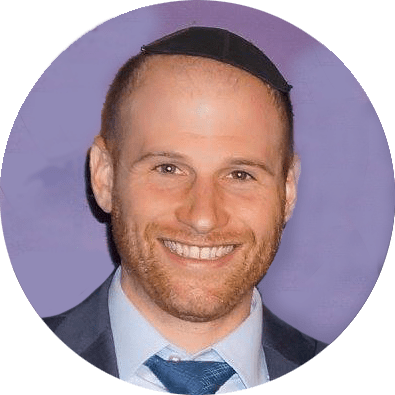

Compromise for the Sake of Community: an Interview with Sam Weinberg
I think that it’s important to remind ourselves that our diversity is defined in fairly narrow terms. We like to say that we are diverse, and that means that we span from traditional Conservative to right-wing Orthodox. Within that range, we like to celebrate our diversity, and that means that we can all learn from each other. That can be a challenge, since some in our community are very cautious about, if not openly hostile to, the idea of learning from those outside of their own group. It wasn’t always this way; I see more separatist trends developing in the last ten years, meaning that at least one segment of our population is growing increasingly insular. The community in general has become much more polarized, and some people only want to be with others who look and think like them.


